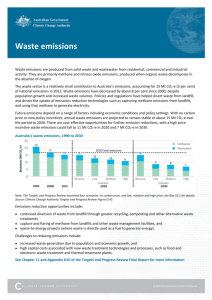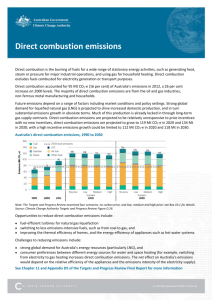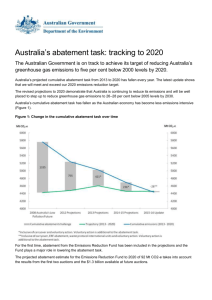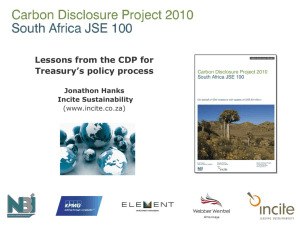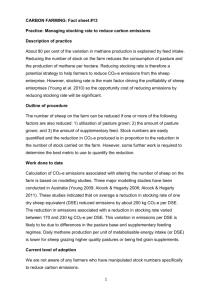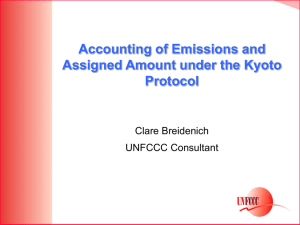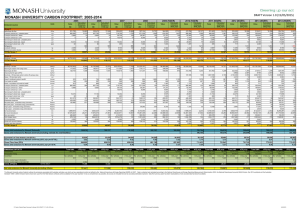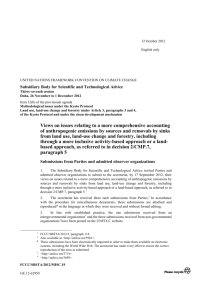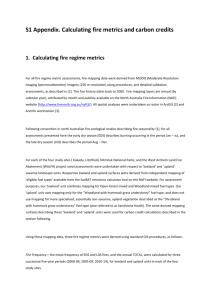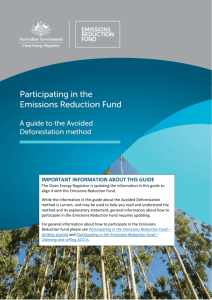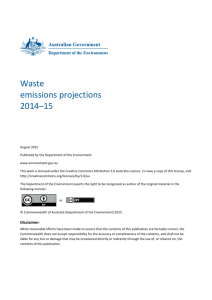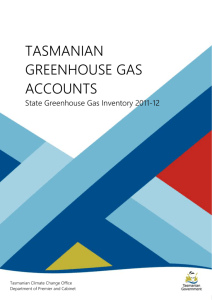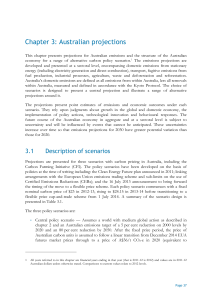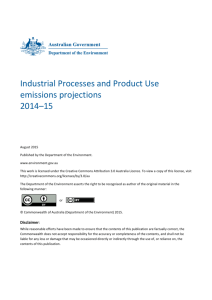Land use and forestry emissions
advertisement
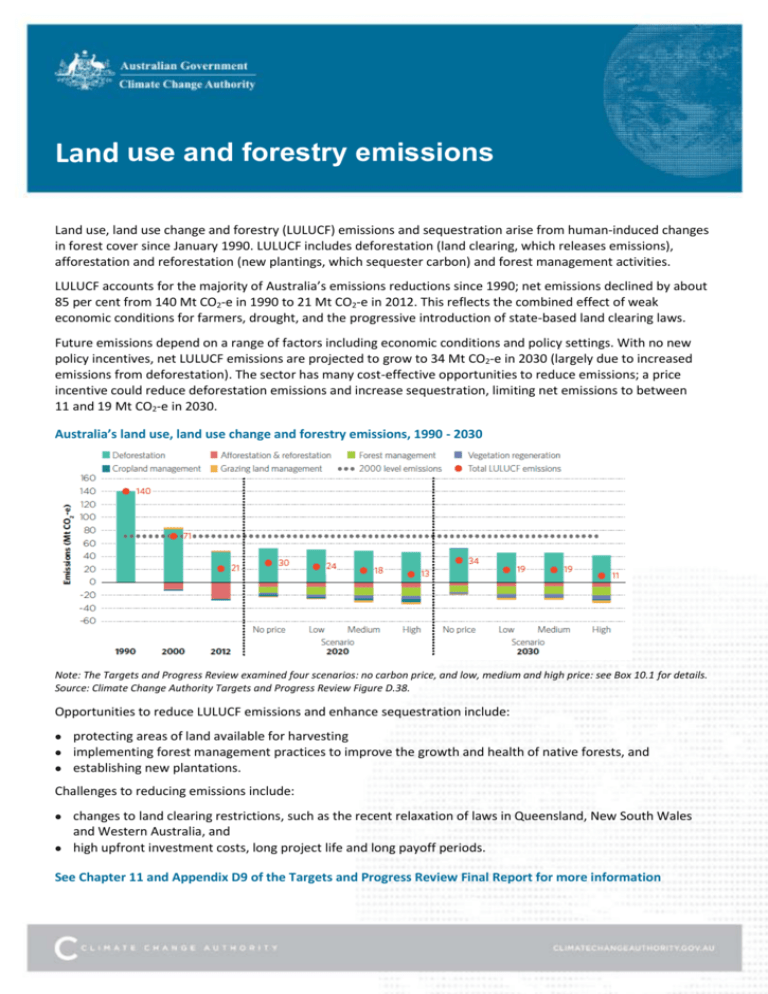
Land use and forestry emissions Land use, land use change and forestry (LULUCF) emissions and sequestration arise from human-induced changes in forest cover since January 1990. LULUCF includes deforestation (land clearing, which releases emissions), afforestation and reforestation (new plantings, which sequester carbon) and forest management activities. LULUCF accounts for the majority of Australia’s emissions reductions since 1990; net emissions declined by about 85 per cent from 140 Mt CO2-e in 1990 to 21 Mt CO2-e in 2012. This reflects the combined effect of weak economic conditions for farmers, drought, and the progressive introduction of state-based land clearing laws. Future emissions depend on a range of factors including economic conditions and policy settings. With no new policy incentives, net LULUCF emissions are projected to grow to 34 Mt CO2-e in 2030 (largely due to increased emissions from deforestation). The sector has many cost-effective opportunities to reduce emissions; a price incentive could reduce deforestation emissions and increase sequestration, limiting net emissions to between 11 and 19 Mt CO2-e in 2030. Australia’s land use, land use change and forestry emissions, 1990 - 2030 Note: The Targets and Progress Review examined four scenarios: no carbon price, and low, medium and high price: see Box 10.1 for details. Source: Climate Change Authority Targets and Progress Review Figure D.38. Opportunities to reduce LULUCF emissions and enhance sequestration include: protecting areas of land available for harvesting implementing forest management practices to improve the growth and health of native forests, and establishing new plantations. Challenges to reducing emissions include: changes to land clearing restrictions, such as the recent relaxation of laws in Queensland, New South Wales and Western Australia, and high upfront investment costs, long project life and long payoff periods. See Chapter 11 and Appendix D9 of the Targets and Progress Review Final Report for more information

